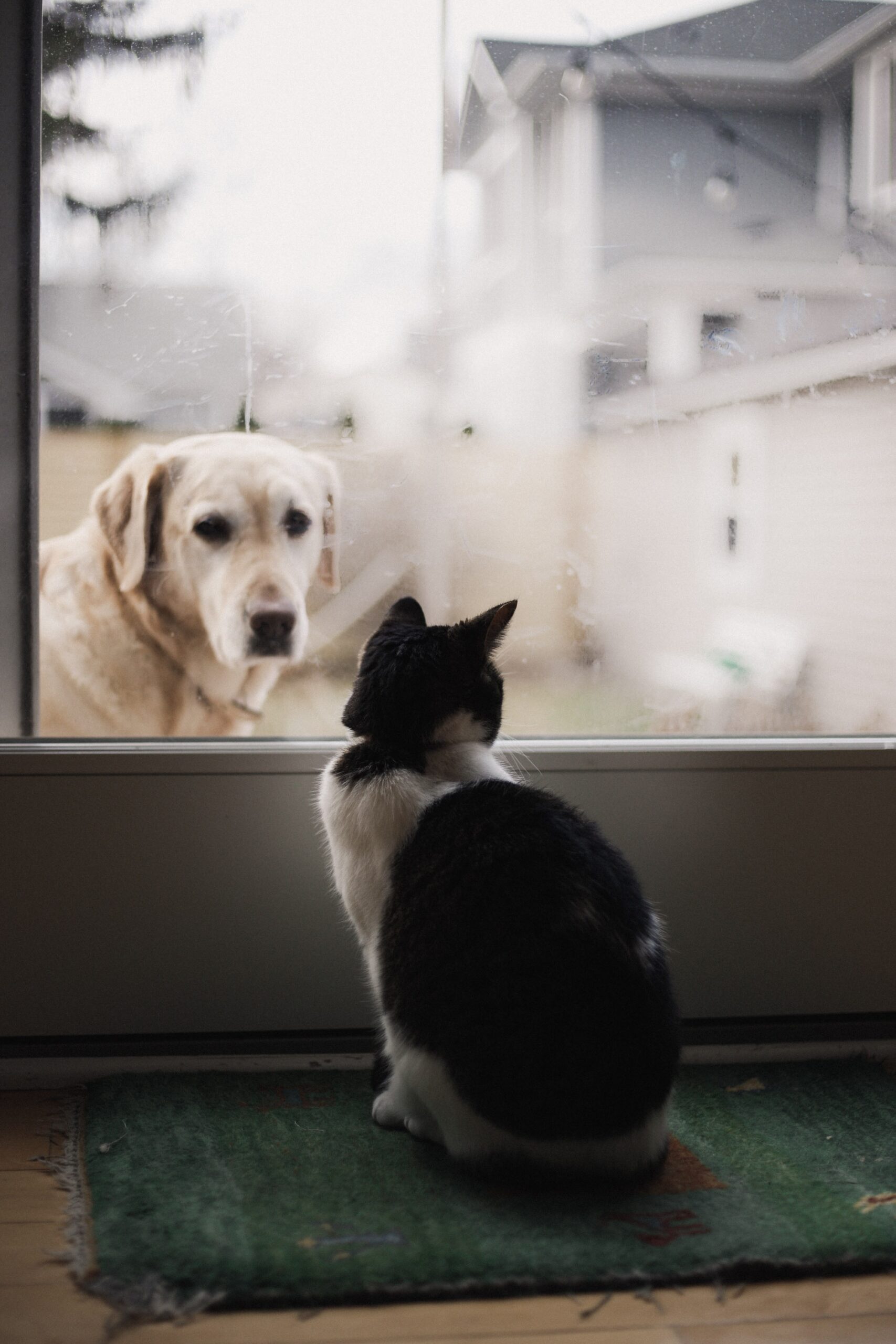Congratulations! If you’re reading this, you’re probably the proud, new parent of a fuzzy creature. And like any new parents, you might have some jitters about introducing your adopted cat or pooch into your home. The transition phase isn’t always smooth at first. Adjustments need to be made for both pet and pet owner before everyone settles in as a happy family. Before you freak out about that kitten hiding under your bed, or that puppy eating his way through your shoe rack, take some advice from vet experts who know a thing or two about welcoming an animal into his or her new digs.
Ease Them In To Your Space Slowly
The most important guideline when introducing your pet to your interior world? Take it slow and steady. “Watch for cues about how your pet is feeling,” advises the Animal Humane Society. “If your pet seems timid, try to move slowly, or just sit in the same room reading a book and let your pet come to you. If your pet is full of energy and ready to play, get out the toys right away.”
Either way, you want to eliminate any outside chaos that will add to your pet’s confusion. Staying in one place and letting them come to you allows you to build trust with your pet and bolsters their confidence in the home.
“Many animals coming from the shelter have been in a cage or kennel for days or weeks before arriving at your home,” according to the Animal Humane Society. “To have the run of an entire house can be overwhelming, especially if it happens too fast.” Instead sequester your pet to one room at first and stay there with them. Then gradually open doors to additional rooms in the house. With kittens in particular, the smaller space the better for their peace of mind.
Beds and Boxes and Crates, Oh My!
For cats, find out what kind of litter and box your kitten was using at the kennel and try to start her out with a similar brand. This will help familiarize her with your home, and more importantly, her new “bathroom.” Most cats remember to use their “poo corner” after you place them once inside their litter box. If your kitten is more comfortable in one small room of your house at first, keep the litter box near her—even if you plan to move it later.
Similarly, finding the right crate to make your puppy comfortable will make all the difference. “The crate should be large enough so he can comfortably turn around in it but not much bigger to discourage him from soiling his sleeping area,” suggests Vetstreet. “It should also have plenty of soft bedding in it, as well as a durable stuffed toy he can use as a surrogate littermate (make sure the toy doesn’t include any parts he can chew off and swallow).”
For the first night, Vetstreet recommends moving the crate into your bedroom so your pooch can sleep in it. “Your puppy’s first night away from his old family is going to be confusing and very likely frightening,” according to the site. “Do not make him sleep all by himself in another room. If possible, have him sleep in a crate next to your bed rather than having him sleep directly on the bed. A very small puppy could fall off the bed, or you could roll over on him and crush him, so a crate helps protects him.”
Break Out the Grub
To make your pet feel right at home, start by putting out the food he loves. Wet food for cats and dogs are particularly effective because they can smell it right away. Even if you plan on feeding them in the kitchen once they’ve settled in, put their food in a spot near them at first to familiarize them with their bowls and encourage them to eat.
Choosing the right feeding bowls are equally important. “Your pet’s whiskers are sensory organs, and overstimulating them is not only distracting, but can induce ‘whisker fatigue,’ which, like strong smells for humans, can make animals less likely to eat and drink,” writes The New York Times‘ Wirecutter Staff. They recommend Petfusion’s shallow, pie-tin-like bowls for cats, and PetMates’s stable, broad-based bowls for dogs, because “the containers are stainless steel and dishwasher-safe, and their smooth, scratch-resistant surfaces are easy to clean.”
Get Your Props in Order
For both dogs and cats, a cushioned floor mat or bed provides a spot where they can feel secure. (It also helps keep them off the furniture.) Cats are drawn to warmth, so a heated bed like this one (under $40 at Amazon) makes for a snuggly place for a skittish kitten to relax.
Finding the right bed for your dog depends on his unique requirements. “All dogs have different needs, so focus on what’s unique about yours,” Yena Kim, owner of Menswear Dog, tells New York Magazine.If your dog has special ailments like joint pain or arthritis, opt for orthopedic beds that will help ease their pain on a daily basis. You’ll know [you’ve] made the right choice on a dog bed when you hand your dog a treat and he takes it to his bed to take his time enjoying it.” She recommends Casper Memory Foam beds, which start at $125, but NYMag has a list of other expert-approved beds for those on a budget.
When it comes to dog toys, size matters. For dogs, the toy shouldn’t be too small or too soft that your dog could swallow it. While most dogs love tennis balls, if his mouth is too large it could end up in his throat.
“Cats aren’t picky when it comes to toys,” writes New York Times‘ Wirecutter Staff. “But the Veterinary Centers of America recommends toys that mimic prey behavior, with rapid, unpredictable movements, or high-pitched sound, if you can bear it.”
If you’re looking for specific vet-recommended toys, here’s a list for cats and another for dogs.
Introduce Your New Member To Rest of the Family
“If you have other pets, you’ll want to make sure your veterinarian gives your pup a clean bill of health before you expose him to the rest of the household pets,” suggests Vetstreet. Then, introduce the new puppy to your old dog or cat gradually.
The Vetstreet folks suggests making the first dog-on-dog meeting outside the home to avoid territorial issues. “If the new puppy knows how to walk on a leash, walking the dogs side by side is a good way to let them get to know one another,” they advise. “Bring lots of treats for your older dog and be liberal with them in exchange for his good behavior.” It’s also crucial to give the old dog lots of attention so he feels confident in his place in the household, even with the new addition.
With a new cat or kitten, be sure to isolate her in her own quarters until she gradually becomes comfortable exploring the rest of the house. If you already have a dog, hold him by the leash so the cat can come to sniff him out and not the other way around. For more tips on introducing two pets to each other, the Animal Humane Society has everything you need to know. And remember, you got this!










